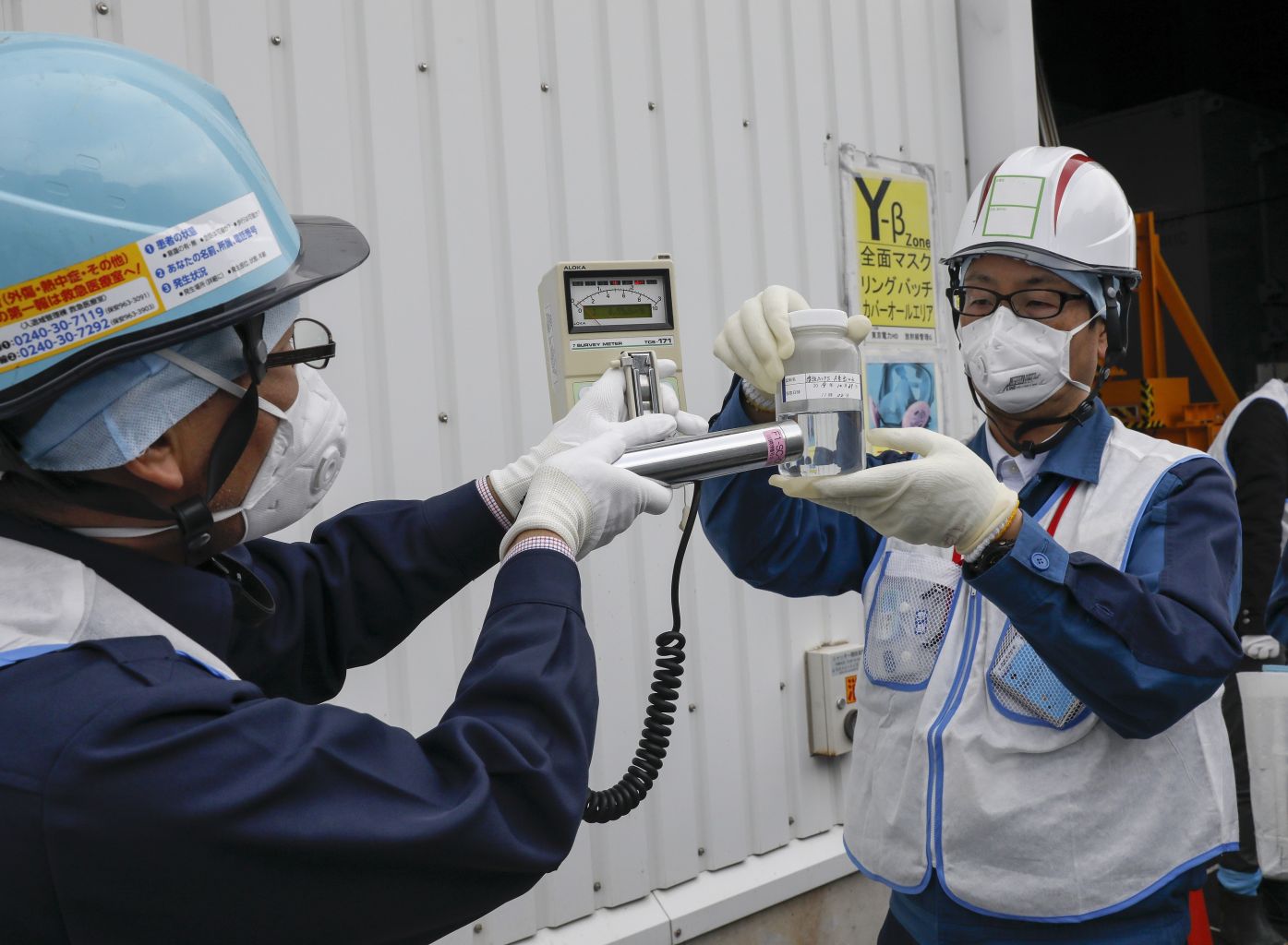Japan panel recommends ocean release for radioactive Fukushima water
Sign up now: Get ST's newsletters delivered to your inbox

Tepco workers show how to measure radioactivity in processed water at the tsunami-devastated nuclear power plant in Fukushima Prefecture, Japan.
PHOTO: EPA-EFE
Follow topic:
TOKYO (REUTERS) - A panel of experts advising Japan's government on a disposal method for radioactive water from the destroyed Fukushima nuclear plant on Friday (Jan 31) recommended releasing it into the ocean, a move likely to alarm neighbouring countries.
The panel under the industry ministry came to the conclusion after narrowing the choice to either releasing the contaminated water into the Pacific Ocean or letting it evaporate - and opted for the former.
Based on past practice, it is likely the government will accept the recommendation.
The build-up of contaminated water at Fukushima has been a sticking point in the cleanup, which is likely to last decades, especially as the Olympics are due to be held in Tokyo this summer with some events less than 60km from the wrecked plant.
Neighbouring South Korea has retained a ban on imports of seafood from Japan's Fukushima region imposed after the nuclear disaster and summoned a senior Japanese embassy official last year to explain how the Fukushima water would be dealt with.
Its athletes are planning to bring their own radiation detectors and food to the Games.
In 2018, Tokyo Electric apologised after admitting its filtration systems had not removed all dangerous material from the water - and the site is running out of room for storage tanks.
But it plans to remove all radioactive particles from the water except tritium, an isotope of hydrogen that is hard to separate and is considered to be relatively harmless.
"Compared to evaporation, ocean release can be done more securely," the committee said, pointing to common practice around the world where normally operating nuclear stations release water that contains tritium into the sea.
The recommendation needs to be confirmed by the head of the panel, Nagoya University Professor Emeritus Ichiro Yamamoto, and submitted to the government at a later date, which has not been set.
Tokyo Electric, or Tepco, has collected nearly 1.2 million tonnes of contaminated water from the cooling pipes used to keep fuel cores from melting since the plant was crippled by an earthquake and tsunami in 2011.
The water is stored in huge tanks that crowd the site.
The utility says it will run out of room to store the water by 2022.

